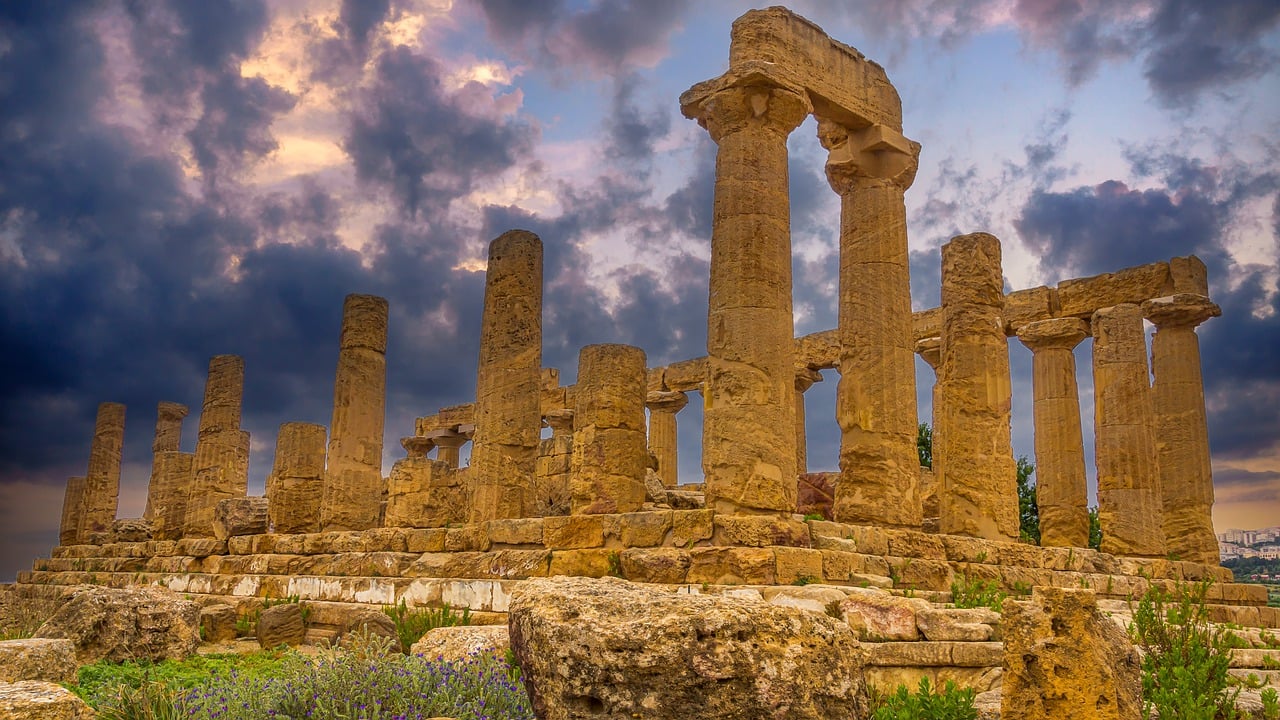Hera, known as Juno in Roman mythology, stands as the esteemed queen of the Greek gods and the devoted wife of Zeus. Embodying the quintessential attributes of womanhood, she served as the goddess of marriage, family, and guardian of women during childbirth. Despite her unwavering loyalty to Zeus, Hera is often portrayed as possessive and vengeful, particularly towards her husband’s extramarital affairs and the offspring resulting from those liaisons.
Family Dynamics
In the realm of Greek mythology, Hera was the progeny of Cronus and Rhea, and together with Zeus, she gave birth to several children: Ares, the god of war; Hebe, the goddess of youth; and Eileithyia, the goddess of childbirth. Hera, fueled by anger, bore Hephaistos, the god of metallurgy, on her own in retaliation for Zeus’ singular birth of Athena. In a tragic twist, out of disdain for his appearance, Hera cast Hephaistos from Mount Olympus; upon his fall to earth, he sustained a lifelong lameness. Different narratives suggest that Zeus, alarmed by Hephaistos’ deformity, was the one who sent him tumbling from the heavens. The rift between mother and son deepened when Hephaistos imprisoned Hera in a special throne, from which she could only escape by promising him the hand of Aphrodite.
The Wrath of Hera
Hera’s life was marked by jealousy and fury stemming from Zeus’s many infidelities.
One of the notable myths involves Leto, who, despite being pregnant, was cursed by Hera, making it impossible for her to find refuge. After a lengthy search, Leto finally found sanctuary on the island of Delos where she gave birth to Apollo. Still, Hera intervened, having her daughter Eileithyia prolong Leto’s labour for an agonizing nine months.
Another famous myth illustrates the tumultuous relationship among Hera, Zeus, and Io. In different versions, either Hera transformed Io into a cow to thwart Zeus’s advances, or Zeus himself, wishing to hide his affair from Hera, changed her into a cow. Hera, spotting through the ruse, took ownership of the cow, entrusting the hundred-eyed Argos to guard her. In retaliation, Zeus dispatched Hermes to steal in and slay Argos. To commemorate this act, Hera transferred Argos’s eyes to the peacock’s feathers. Determined not to let matters settle, she also sent a gadfly to follow and torment Io endlessly.
Other women who drew Hera’s ire included Semele, who, deceived by Hera into asking Zeus to show his divine form, perished at the sight. Callisto suffered a similar fate, transformed into a bear before being hunted by Artemis, with Zeus eventually placing her in the sky as a constellation.
Hera’s vengeance reached a peak with the birth of Hercules, a son of Zeus and Alkmene. Hera orchestrated his delay in birth to ensure his cousin Eurystheus inherited the throne of Tiryns and sent venomous snakes to kill Hercules in his cradle. Later, she fostered madness in him, leading him to murder his wife and children. She manipulated Eurystheus into assigning Hercules perilous labours, believing that they would ultimately lead to his doom. Moreover, she conjured fierce monsters, such as the Nemean lion and the Ladon dragon, to haunt the hero’s journey. However, not all heroes faced Hera’s wrath; she extended her favor to Jason for his compassionate act of aiding her in disguise during a river crossing, promising her support whenever needed.
The Consequences of Disobedience
Hera’s punishment did not spare Ixion, who faced an eternity bound to a spinning wheel in Hades for making a crude advance towards her, nor Tityos, who suffered daily torment by a vulture as penalty for his actions toward her.
Hera in the Trojan War
In Homer’s “Iliad”, Hera emerges as a key player in the narratives surrounding the Trojan War. She aligned herself with the Achaeans, orchestrating plans to subvert the city of Troy, fuelled by her resentment towards the Trojan prince Paris for deeming Aphrodite the fairest goddess. Hera’s love for three cities—Argos, Sparta, and Mycenae—was highlighted during the conflict. Homer often referred to her with epithets like “white-armed” and “ox-eyed”, while Hesiod described her as hailing from Argos and “golden-sandaled”.
Sacred Spaces of Worship
In ancient Greek religion, Hera commanded significant reverence. Argos, her main sanctuary, began nurturing her cult around the 8th century BCE, while Olympia boasted a temple constructed in her honor around 650-600 BCE. The island of Samos, believed by some to be Hera’s birthplace, held religious significance dating back to the Mycenaean era. By the 8th century BCE, Samos had emerged as a crucial center for her worship, thriving through to the Roman era. Festivals such as the Heraia celebrated athletic competitions for women, reflecting the goddess’s prominence and the annual hierogamous festivals reenacting the union of Zeus and Hera.
Artistic Representations
Being a prominent deity, Hera also found her way into ancient Greek art, especially on red- and black-figure pottery. However, the absence of distinct attributes often made her portrayal indistinguishable from that of other goddesses. In art, she is frequently depicted seated on a throne, sometimes adorned with a crown (polos), holding a sceptre, or veiled as a bride. She may also be shown with a pomegranate, a symbol of fertility, as well as associated with the peacock and cuckoo—both creatures she favored on Olympus.
Juno in Roman Tradition
In Roman mythology, Hera evolved into Juno, who encapsulated aspects of family devotion and fidelity rather than the vengefulness attributed to her Greek counterpart. Emblematic of Rome, Juno was celebrated alongside Jupiter and Minerva. The Matronalia, an annual festival in her honor, occurred in June, a month named in her respect, signifying a time of auspiciousness for marriages in Roman culture.



